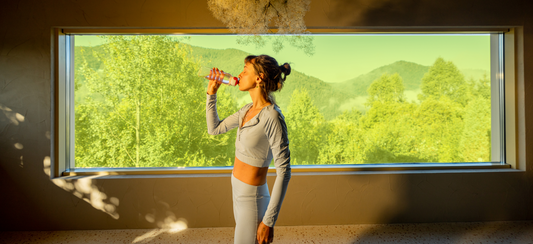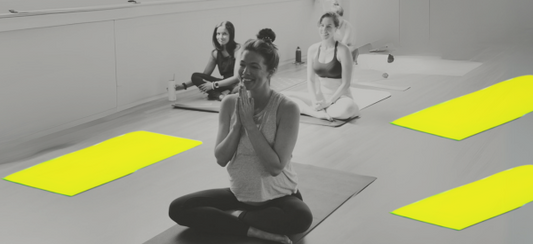Shake Your Plants, not your plastics! What if we told you that you are consuming a harmful new substance every day that you have no control over? Introducing the microscopic wrecker: microplastics.
These small pieces of indiscernible plastic, measuring less than 5mm, are becoming a huge health concern. From single-use plastic such as drinking straws and cutlery, all the way to synthetic clothes like polyester (that shed around 496,030 plastic microfibres per wash and make their way into the ocean and consequently the food chain), the average person could be consuming around 5g of plastic weekly. That’s like eating a credit card’s worth of plastic each week!
What's worse, it’s not just accidental microplastics that find their way into everything around us. By adding microplastics to an array of commercial products, producers are able to cut costs while delivering a decent quality product. From cosmetics and medicines, to paint and nappies, the list of commercial products with intentionally added microplastics keeps increasing. This might sound too complicated, and far away from us to cause alarm - but don’t be fooled, these microplastics are more harmful than you might think!
Amber alert! Plastics can carry toxic pollutants including (but not limited to) heavy metals and polychlorinated biphenyls. And take it from us, this is no joke.
A wide range of laboratory studies has shown that exposure to microplastics is directly linked to negative effects on living organisms. If the sound of inflammatory lesions, metabolic disturbances and neurotoxicity doesn’t sound terrifying, we don’t know what does! Microplastic pollution has recently been detected in human blood for the first time, with scientists finding these tiny particles in nearly 80% of people tested. Microplastics have also been identified in the placentas of unborn babies, and while the health impact is still unclear, scientists believe these may cause long-term damage to fetuses.
This is not just a direct health concern, but also detrimental to the environment. For example, microplastics also interact with soil fauna, negatively affecting their soil functions and have also caused the decrease of small species, such as larvae and mites. These tiny creatures naturally maintain the fertility of land where your fruits and vegetables are grown, and where livestock is raised therefore microplastics on these species is negatively impacting, and could potentially restrict, so much of our daily food consumption.
As microplastics continue to infiltrate our air, oceans, and food sources, they also pose massive physical and toxicological threats to thousands of animals and living organisms. The potential for microplastics to alter the way we breathe, eat and exist definitely sounds terrifying.
So, the big question is, how can we reduce our unknowing consumption of microplastics? How can we contribute to a cleaner and safer tomorrow?
There is an increasing need to implement more and more control measures such as micron level filtration in the air and in water. Furthermore, operational measures have started to emerge within the supply chain, with a focus on both creating awareness of the dangers of microplastics and developing evidence to support further campaigning against these microscopic wreckers.
This all sounds great, but we know working on micron-level filtration may not necessarily be something that you can do directly as a consumer.
For us, we have a list of things you can do to minimize your exposure to microplastics. Instead of buying water in plastic bottles, it’s a good idea to buy a BPA-free reusable bottle (we’ve partnered with Frank Green so that you can SYP with the coolest reusable bottle out there). Therefore, getting rid of plastic bottles is a great first step. Plastic bottles contain harmful chemicals that could contaminate your water, meaning a switch could mean cleaner water for you! Not just this, but you would personally contribute to less harmful waste and costly transportation. All of this finally leads back to cleaner oceans meaning a cleaner planet!
Other simple-to-follow tips include avoiding microwaving food in plastic containers, choosing to cut down on takeaway packaging and cups, and replacing tea bags with loose-leaf tea. Not only are these easy tips but they can have an incredibly positive impact, such as cutting transportation costs, saving money and aquatic life, and increasing sustainability, which ideally leads to a better world impacted less and less by environmental pollution.
We know it seems really terrifying, but there is so much that you can do to limit your intake of microplastics. While it will take a bit of effort from your end, taking small daily steps away from our modern, convenient, unsustainable way of living can have a tremendous impact on our planet.
Remember: when faced with the option, try to avoid choosing the plastic one.
-The SYP Team




